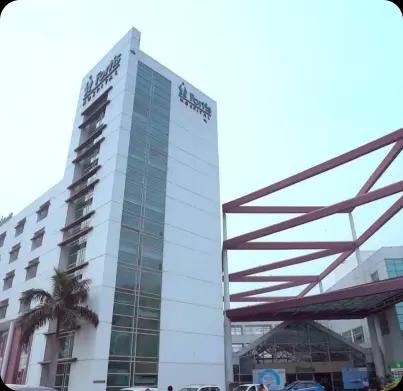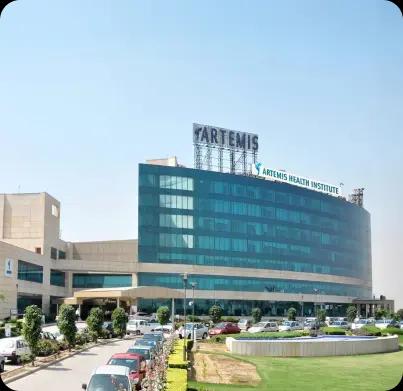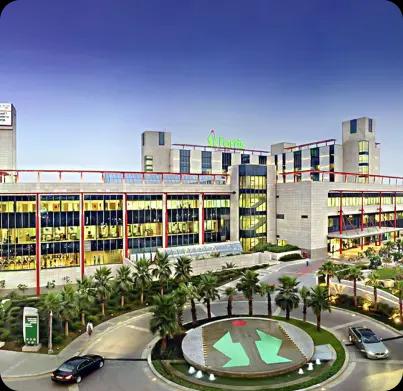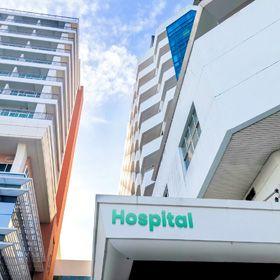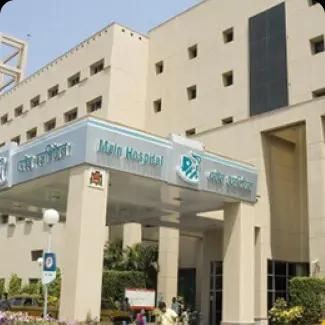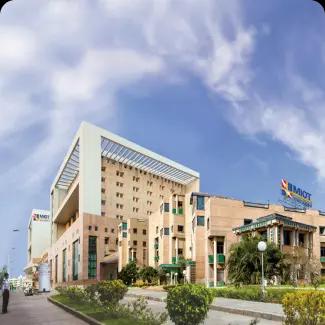
Melanoma
Melanoma developed from melanocytes produces melanin causing pigmentation of the skin. Any change in moles or size of moles if untreated leads to skin cancer. Usually affects the skin. But can affect skin on arms, back, face and legs. It rarely happens in eyes or nose and throat. It can also metastasize to other parts of the body if left untreated.
Free Pick up and Drop
No Cost EMI
Post Surgery Care
Melanoma developed from melanocytes produces melanin causing pigmentation of the skin. Any change in moles or size of moles if untreated leads to skin cancer. Usually affects the skin. But can affect skin on arms, back, face and legs. It rarely happens in eyes or nose and throat. It can also metastasize to other parts of the body if left untreated.
Symptoms Of Melanoma
Symptoms
Types of conditions
There are five main types of Melanoma
Melanoma Surgery
Lymphadenectomy
Targeted Cancer Therapy
Radiation Therapy
Immunotherapy
Melanoma Surgery
Surgical removal of the melanoma lesion is the primary treatment for localized melanoma. This may involve excision of the tumor along with a margin of surrounding healthy tissue (wide local excision). In more advanced cases, surgical techniques such as lymphadenectomy (removal of lymph nodes) or metastasectomy (removal of metastatic lesions) may be performed.
Types of Melanoma
Melanoma can manifest in different types or conditions, each with its own characteristics and implications for treatment and prognosis. Some of the common types of melanoma include:
-
Superficial Spreading Melanoma: This is the most common type of melanoma, typically characterized by horizontal growth along the top layer of skin before penetrating deeper layers. It often presents as asymmetrical lesions with irregular borders and variations in color.
-
Nodular Melanoma: Nodular melanoma grows more rapidly and vertically than other types, often appearing as elevated nodules on the skin. Unlike superficial spreading melanoma, nodular melanomas may lack the typical asymmetry and color variations.
-
Lentigo Maligna Melanoma: This subtype often develops on sun-damaged skin, particularly in older individuals. It initially presents as a flat, brown patch that gradually enlarges over time. Lentigo Maligna melanoma can be challenging to diagnose due to its subtle appearance.
-
Acral Lentiginous Melanoma: Acral lentiginous melanoma occurs on hairless areas of the skin, such as the palms, soles, or beneath the nails. It often appears as dark-colored patches or streaks and is more common in people with darker skin tones.
-
Amelanotic Melanoma: Unlike typical melanomas that exhibit pigment (melanin), amelanotic melanomas appear as flesh-colored or pink lesions. These can be challenging to diagnose visually, as they may resemble other benign skin conditions.
-
Desmoplastic Melanoma: Desmoplastic melanoma is a rare subtype that presents as firm, flesh-colored or bluish nodules. It tends to occur on sun-exposed areas of the body and may be more aggressive than other types of melanoma.
-
Mucosal Melanoma: Mucosal melanoma develops in the mucous membranes lining areas of the body such as the mouth, nasal passages, digestive tract, or genital areas. It is relatively rare but tends to be more aggressive and difficult to treat than cutaneous melanoma.
-
Ocular Melanoma: Ocular melanoma occurs in the eye, specifically in the uvea (the middle layer of the eye). It can develop in the iris, ciliary body, or choroid and requires specialized treatment by ophthalmologists and oncologists.
Symptoms of Melanoma
Melanoma, a type of skin cancer, can manifest with various symptoms, including:
- Changes in Moles: Keep an eye on existing moles for any changes in size, shape, color, or texture. Also, watch for the development of new moles.
- Irregular Borders: Melanoma lesions often have uneven or irregular borders rather than smooth edges.
- Color Changes: Melanomas may display multiple colors within the same lesion, such as brown, black, red, blue, or white.
- Asymmetry: One half of the mole or lesion may look different from the other half.
- Diameter: Melanomas are typically larger in diameter than the size of a pencil eraser (about 6mm), but they can be smaller.
- Evolution: Be alert for changes in the mole over time, such as growth in size, changes in color, itching, bleeding, or crusting.
- Symptoms Beyond the Skin: In advanced cases, melanoma can cause symptoms beyond the skin, such as swollen lymph nodes, unexplained weight loss, fatigue, and pain.
If you notice any of these symptoms or other concerning changes in your skin, it's important to consult a healthcare professional promptly for evaluation. Early detection and treatment of melanoma can significantly improve outcomes. Melanomas symptoms can happen anywhere on the body. Melanomas most often develop in areas that have had exposure to the sun. This includes the arms, back, face and legs.Melanomas also can happen in areas that aren't as exposed to the sun. This includes the soles of the feet, palms of the hands and fingernail beds. Melanoma also can happen inside the body. These hidden melanomas are more common in people with brown or Black skin. Another tool to recognize melanoma is the ugly duckling sign. If one of your moles looks different from the others, it’s the ugly duckling and should be seen by a dermatologist.
Diaganosis
If you have a mole or other spot that looks suspicious, your doctor may remove it and look at it under the microscope to see if it contains cancer cells. This is called a biopsy.
After your doctor receives the skin biopsy results showing evidence of melanoma cells, the next step is to determine if the melanoma has spread. This is called staging. Once diagnosed, melanoma will be categorized based on several factors, such as how deeply it has spread and its appearance under the microscope. Tumor thickness is the most important characteristic in predicting outcomes.
There are several tests your doctor can use to stage your melanoma. Your doctor may use these tests:
- Sentinel Lymph Node Biopsy
- Magnetic Resonance Imaging (MRI) scan
- Positron Emission Tomography (PET) scan
- Blood work
Risk Factors
Factors that may increase the risk of melanoma include:
- A family history of melanoma.
- A history of sunburn.
- Exposure to UV light.
- Having many moles or moles that aren't typical.
- Living closer to the equator or at a higher elevation.
- Skin that sunburns easily.
- Weakened immune system
Preparing for Treatment
- Educate Yourself
- Seek a Specialist
- Gather Medical Records
- Develop a Support System
- Nutrition and Exercise
- Arrange Transportation and Support
- Address Financial Concerns
- Prepare for Side Effects
- Follow Pre-Treatment Instructions
- Emotional Well-being
- Medical Directives
- Stay Informed and Communicate
Your journey to good health begins here

Accredited Hospitals
Nationally accredited hospitals for high-quality care

Multi-language Support
Convey your needs in the language you're most comfortable in

Travel Booking Assistance
Seamless booking assistance for your healthcare journey

Personalised Treatment Plans
A treatment journey tailored to all your preferences and needs

Unparalleled Hospitality
Experience exceptional hospitality during your stay

Easy Medical Visa Approvals
Dedicated assistance for medical visa requirements
Plan your healthcare journey with Karetrip!
India’s Best Hospitals are Partnered With Karetrip
Access World-Class facilities from top Hospitals across India
Consult with India’s most experienced doctors
Experience premium care from India’s leading specialists

Dr. Rahul Chaudhary
Surgical Oncologist
21+ Years Of Experience

Dr. Ayan Basu
Radiation Oncologist
18+ Years Of Experience

Dr. Joydeep Chakrabartty
Surgical Oncologist
22+ Years Of Experience

Dr. S K Bala
Surgical Oncologist
12+ Years Of Experience

Dr. Rajeev Sharan
Surgical Oncologist
21+ Years Of Experience

Dr. Belliappa
Radiation Oncologist
33+ Years Of Experience
Cost Estimation
Learn about the expenses involved in the procedure and what factors affect them.

The cost of melanoma surgery in India can vary depending on various factors such as the stage of melanoma, the type of surgery required (excision, wide local excision, sentinel lymph node biopsy, lymph node dissection, etc.), the location and reputation of the hospital or healthcare facility, the surgeon's fees, anesthesia charges, pre-operative tests, post-operative care, hospital stay (if required), and any additional treatments or interventions needed. As a rough estimate, the cost of melanoma surgery in India can range from approximately ₹50,000 to ₹5,00,000 or more. However, this is just a general range, and the actual cost can vary significantly based on individual circumstances.
-
Surgical procedures: The cost of surgical removal of skin cancer can range from around ₹20,000 to ₹1,00,000 or more, depending on the complexity and extent of the surgery.
-
Radiation therapy: The cost of radiation therapy sessions can range from around ₹10,000 to ₹50,000 per session. The total cost will vary according to the required number of sessions.
-
Targeted therapy and immunotherapy: The cost of targeted therapy or immunotherapy drugs for advanced or metastatic skin cancer can be quite high, ranging from ₹1,00,000 to several lakhs of rupees per month, depending on the specific medication and treatment duration.
The average cost of the Melanoma in India is around ₹ 50,000 to ₹ 5,00,000.

₹ 5,00,000
High Cost
₹ 2,50,000
Average Cost
₹ 50,000
Low Cost
The LIST of AVERAGE COST of the Melanoma across TOP 6 cities in India in Indian Rupee (INR) is as follows :
City
Lowest Cost
Average Cost
Highest Cost
Chennai
₹ 2,25,000
₹ 3,00,000
₹ 3,75,000
Bengaluru
₹ 2,10,000
₹3,00,000
₹ 3,60,000
Hyderabad
₹ 2,50,000
₹ 3,00,000
₹ 4,00,000
Delhi
₹ 1,90,000
₹ 2,50,000
₹ 3,40,000
Kolkata
₹ 2,75,000
₹ 3,50,000
₹ 4,25,000
Kerala
₹ 2,75,000
₹ 3,50,000
₹ 4,25,000
Commonly Asked Questions
Is surgery the primary treatment for melanoma?
Yes, surgical removal of the melanoma lesion is often the primary treatment for localized melanoma.
What does melanoma surgery involve?
Melanoma surgery typically involves excising the tumor along with a margin of surrounding healthy tissue to ensure complete removal.
Will I need additional treatments after melanoma surgery?
Depending on the stage and characteristics of the melanoma, additional treatments such as lymphadenectomy, targeted therapy, immunotherapy, or radiation therapy may be recommended.
What is lymphadenectomy in the context of melanoma surgery?
Lymphadenectomy is a surgical procedure to remove lymph nodes in the region near the melanoma site to assess for cancer spread and prevent further spread.
Is melanoma surgery always successful?
Melanoma surgery can be highly successful, especially when melanoma is detected early. However, the success of the surgery depends on various factors, including the stage and characteristics of the melanoma.

Do you still have a query?


"I had a successful surgery at Fortis Escorts Hospital, and it was all thanks to Karetrip's help in finding the right hospital for me. The entire process was smooth and stress-free, with Karetrip handling all the arrangements and answering any questions I had. The medical team at the hospital was outstanding, and the facilities were top-notch. I highly recommend Karetrip to anyone looking for a tension-free healthcare experience."
Read MoreFatima
Chattogram


"Thanks to Karetrip, I got connected with MAX Hospital in New Delhi. The team guided me through every step – from finding the right doctor to handling travel and visas. They made a daunting process feel like a breeze. The care I received at MAX Hospital was outstanding, and I can't thank Karetrip enough for making it possible. They truly put patients first and go the extra mile to ensure a smooth healthcare journey. I'm grateful beyond words!"
Read MoreHasan
Dhaka


"At first, I was unsure about having a medical procedure done in a foreign country. However, Karetrip's team at Indraprastha Apollo Hospital made me feel much better. The hospital was very clean, modern, and had everything they needed to help me. The staff were very kind and did everything they could to make me feel comfortable. I'm really happy with how my treatment turned out, and I appreciate Karetrip for making it easy and stress-free."
Read MoreImran
Sylhet
 Google Reviews4.9/5
Google Reviews4.9/5




I had a successful surgery at Fortis Escorts Hospital, and it was all thanks to Karetrip's help in finding the right hospital for me. The entire process was smooth and stress-free, with Karetrip handling all the arrangements and answering any questions I had. The medical team at the hospital was outstanding, and the facilities were top-notch. I highly recommend Karetrip to anyone looking for a tension-free healthcare experience.
Fatima
Chattogram
 Google Reviews4.9/5
Google Reviews4.9/5






